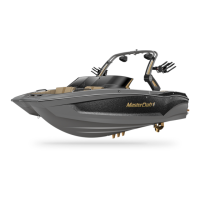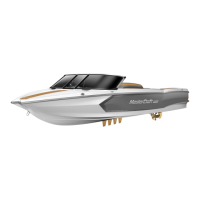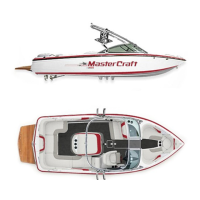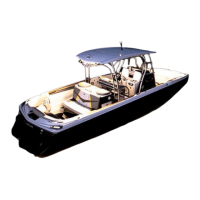CLEAT – A deck tting to which mooring lines are fastened.
STARTER BATTERY – The main battery used for engine starting and
electrical circuits.
CURRENT – The ow of water in a body of water. Current can vary in
strength and direction.
DEADRISE – The vertical distance between a line horizontal to the
keel of a vessel and its chine.
DECK – The open surface on the boat where the passengers walk.
DRAFT – The depth of the boat below the water line, measured
vertically to the lowest part of the hull.
FENDER – A cushioning device used on the side of a vessel or dock to
absorb impact or friction.
FORE – Toward the front or bow of the boat. Opposite of aft.
FREEBOARD – The distance from the waterline to the upper surface of
the side of the deck.
FUEL SENDING UNIT – The electrical device mounted on the fuel tank
which communicates fuel levels to the dashboard fuel gauge.
FUEL MANAGEMENT SYSTEM – An internal computer system in
Aviara boats that calculates fuel burn and fuel tank volume to give
operators precise fuel tank ll levels.
GIVE-WAY BOAT – (1) Term for the boat that must take whatever
action necessary to keep well clear of the boat with the right-of-way
in meeting or crossing situations. (2) The burdened boat.
GUNWALE (GUNNEL) – The rail or upper edge of a boat’s hull side.
HEAD – (1) A marine toilet. (2) Used to describe the compartment or
location of a marine toilet.
HELM - The steering wheel or command area.
HULL – The structural body of a boat below deck.
HYPOTHERMIA – A physical condition in which the body loses heat
faster than it can produce it.
KEEL – The lowest portion of the boat; extending fore and aft along
the boat’s hull bottom.
LINE – Rope. In a marine environment rope is referred to as a “line.”
LIST – Leaning or tilt of a boat toward the side.
MAKING WAY – Making progress through the water.
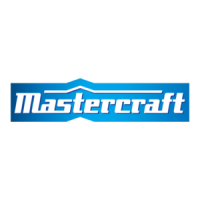
